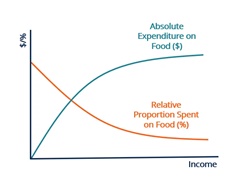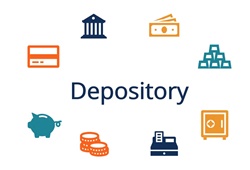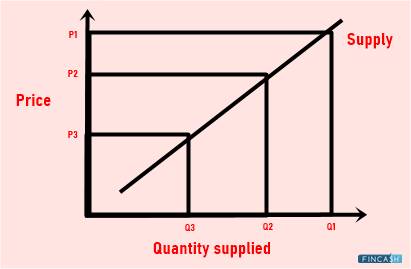
Table of Contents
Defining Engel’s Law
Engel's Law refers to an economic hypothesis proposed by Ernst Engel, a German statistician, in 1857 that states that as Income rises, the percentage of revenue allotted for food purchases decreases.

The proportion of income spent on food drops as a household's income increases, while the amount spent on other things (such as luxury goods) rises.
Briefly Understanding Engel's Law
"The poorer a family is, the greater the proportion of its overall spending that must be allocated to the provision of food," wrote Ernst Engel in the mid-nineteenth century. It was eventually expanded to entire countries, arguing that the wealthier a country is, the lower its food contribution.
According to Engel's Law, lower-income households spend a more significant percentage of their available income on food than middle- and higher-income families. The percentage spent by lower-income households might rise when food expenditures rise, both at home (like groceries) and away from home (such as at a restaurant).
The connection of household income to food intake is well-established in today's popular Economics ideas, especially with population health and improving health quality, a significant rallying point for all developed economies.
Back then, Engel's seminal work was a little ahead of its time. The intuitive and empirical aspect of Engel's Law, on the other hand, aided in the development of intellectual leaps and bounds in the study of income to food consumption habits. For example, because food expenses account for a more significant portion of the poor's budget, the poor's food intake is less diverse than that of more affluent customers. Similarly, the poor are more inclined to eat cheaper, more starchy items (such as rice, potatoes, and bread) within the food budget, resulting in less nutritious, less diverse diets.
Income Elasticity of Food Demand
According to Engels' Law, the income Elasticity of food demand is positive but less than one. The demand's income elasticity measures how sensitive a good's quantity of demand is to changes in income. It's derived by multiplying the percentage change in demand by the percentage change in consumer income.
When a family's income rises, their food expenditures indicate a positive link between consumer income and food demand. It implies that food has a positive income elasticity.
On the other hand, food expenditures are increasing at a slower rate than consumer income, resulting in a fall in proportion.
Talk to our investment specialist
Engel Coefficient
According to Engel's Law, lower-income households spend a more significant proportion of their income on food than middle- and higher-income households. Food consumption often accounts for a large amount of a low-income family's budget. In contrast, the wealthy prefer to spend more of their income on other products such as entertainment and luxury goods.
The idea may apply to a national scale, demonstrating that industrialized countries with higher average household incomes spend their income's lower proportion on food (as measured by the Engel coefficient) than emerging countries with lower income. The Engel coefficient of a country shows its economic standing. A lowering Engel coefficient usually suggests that the country's Economy is growing and its income level is rising. On the other hand, an increasing Engel coefficient indicates a reduction in a country's income level.
Engel Curve
The Engel curve, based on Engel's Law, is an example of a derivative idea. The Engel curve depicts how expenditure on a particular good fluctuates with household income in terms of either proportion or monetary quantity. Age, gender, educational level, and other customer factors influence the shape of an Engel curve.
For different sorts of goods, the Engel curve changes as well. It indicate increasing slopes for normal items with a positive income elasticity of demand, with income level as the x-axis and expenditures as the y-axis. With negative income elasticity, inferior products' Engel curves have negative slopes. It is concave downhill with a positive but decreasing slope in the case of food.
All efforts have been made to ensure the information provided here is accurate. However, no guarantees are made regarding correctness of data. Please verify with scheme information document before making any investment.












